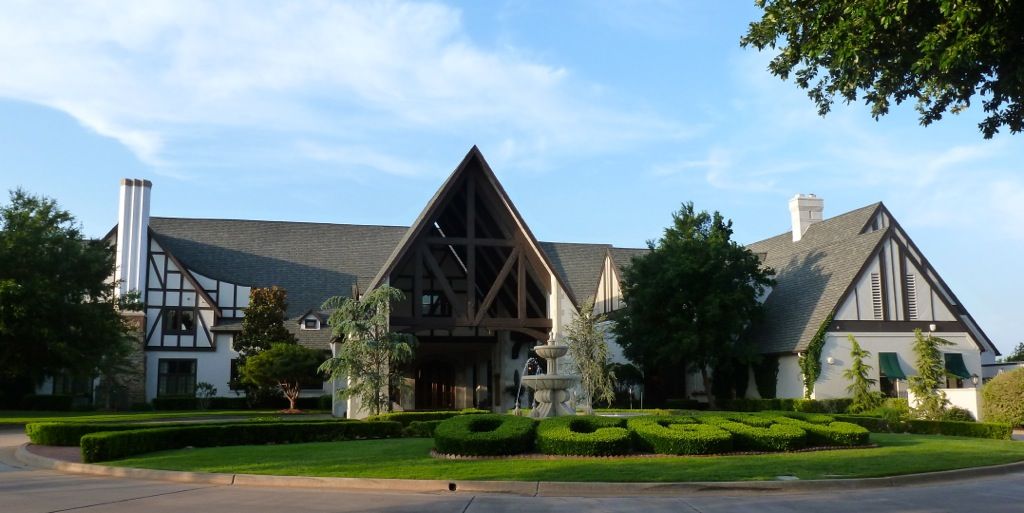
Oklahoma City is on terrain that is ideal for golf. The entire front 9 and last 4 holes on the back nine are routed over rolling land that all slopes toward a small pond in the centre of the property.
Anyone who has spent any time on a Maxwell golf course knows that Maxwell liked using the natural flow of the land to create tilt in his fairways. As such, seeing the first fairway fit perfectly on the land is no surprise...
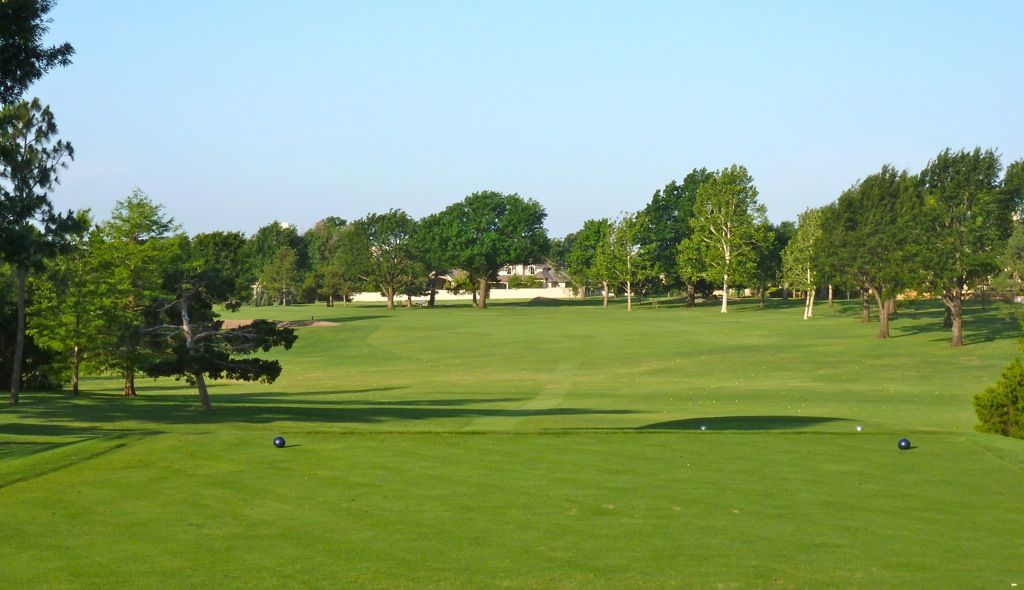
Further, I have come to notice that Maxwell was leery of using the most severe undulations in his fairways. While he does use them on occasion in the DZ of par-5s, often they are used as a carry-hazard on par-3s and on the tee shot on par-4s. For example, there are some wild undulations short of the fairway on the 2nd...
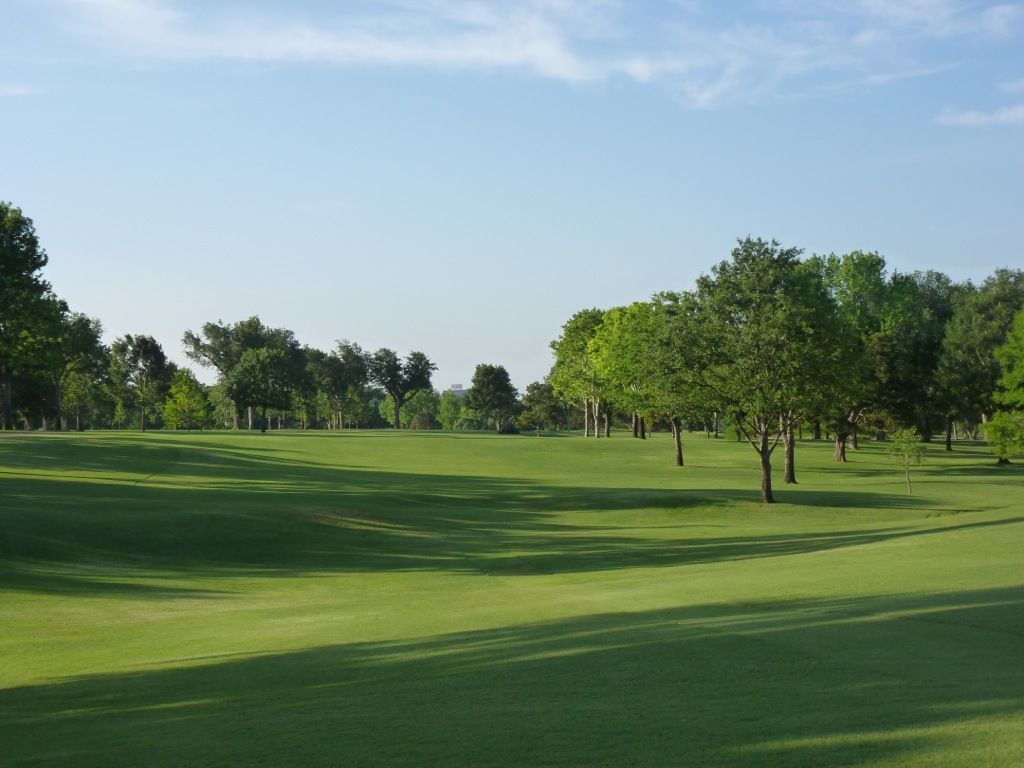
A similarly tilted fairway at the par-4 4th. You really get used to seeing these from Maxwell...

While it seems that the modern architect avoids using blindness from the tee, it was no doubt a favourite trick of Maxwell's. This view of the tee shot at the very long par-5 5th shows a completely blind tee shot with little indication of an ideal line. Imagine seeing this without trees...

Even on some of his most titled fairways, Maxwell would sometimes create (or find?) a plateau on the high side of the fairway to reward a tee shot on the bold line. For example, the severely right-to-left tilted fairway at the 7th...
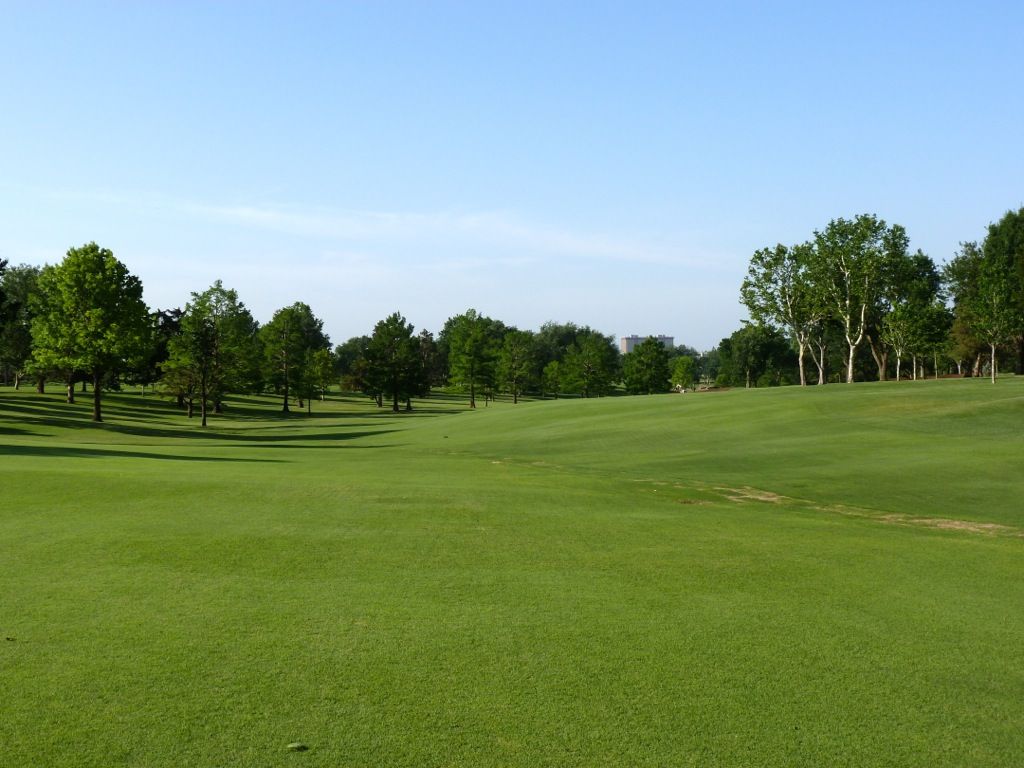
Has a small plateau on the right side that would leave this preferred view of the green...
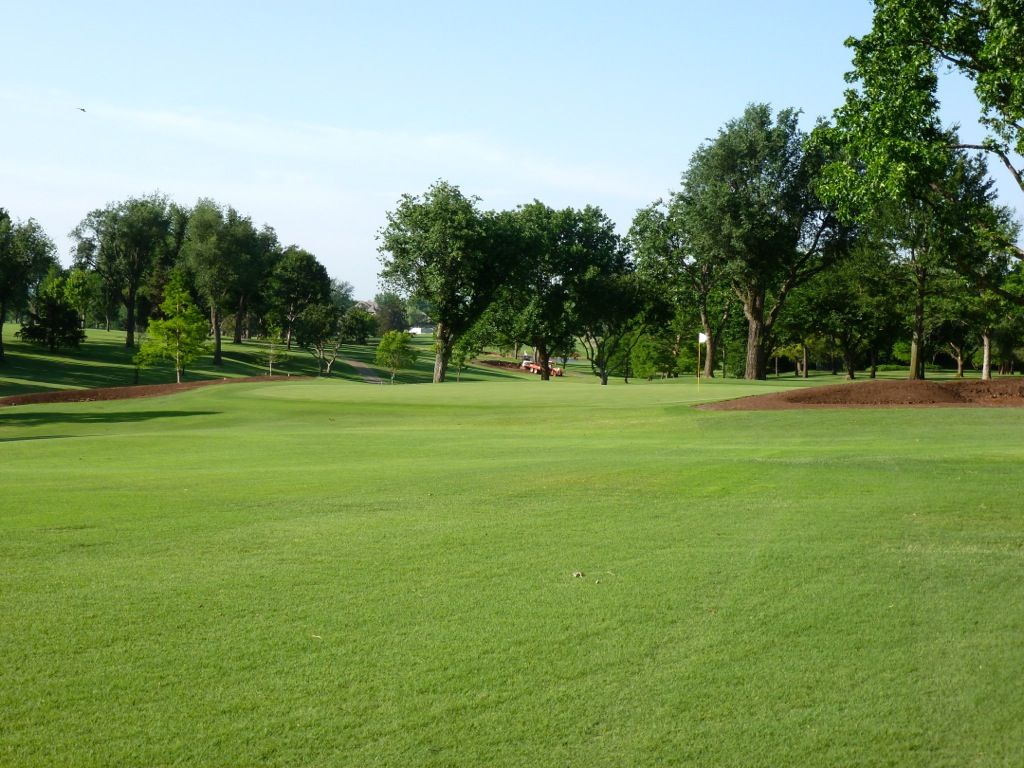
While the front nine has several strong holes (of particular note are the 2nd, 5th and 7th), the real genius of OCGCC is the routing of a five-hole stretch on a tiny piece of land on the other side of a road.
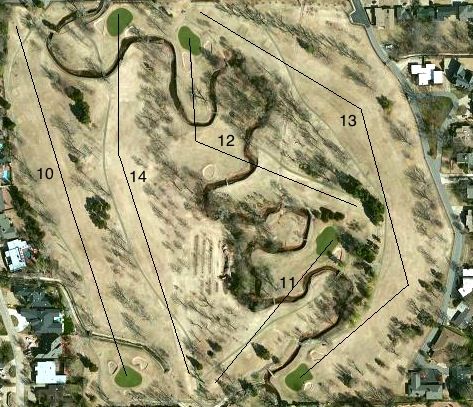
Maxwell makes maximum use of the stream, having it cross in front and left of the green on 10...
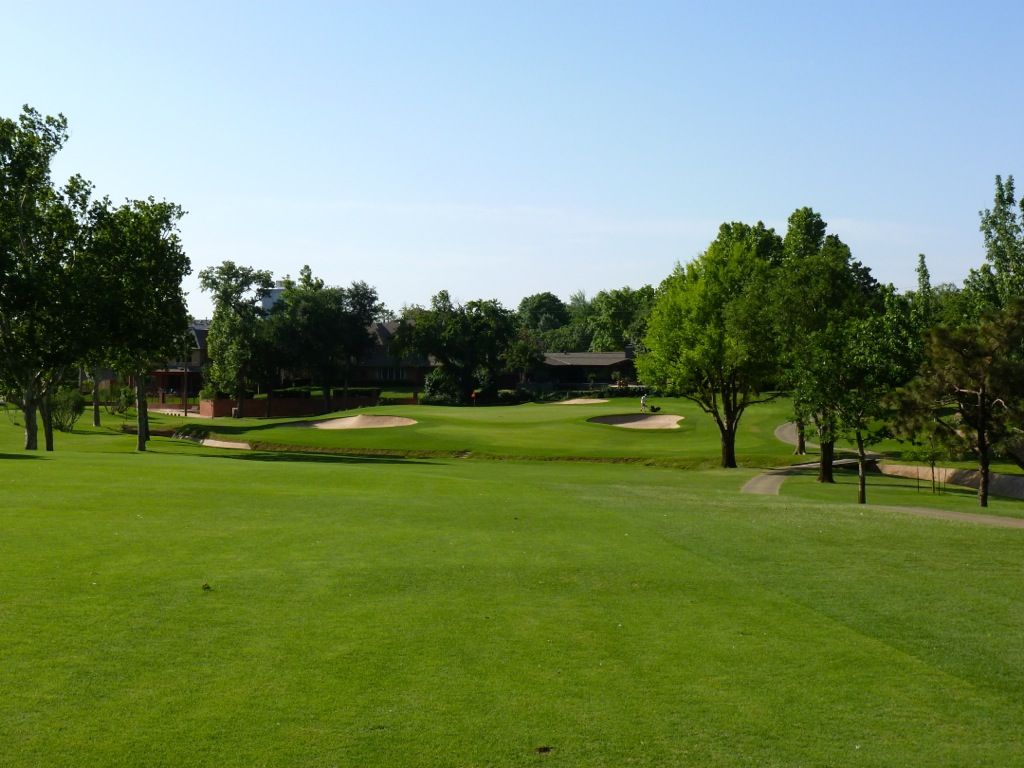
It must runs short and right of the green on the 11th...
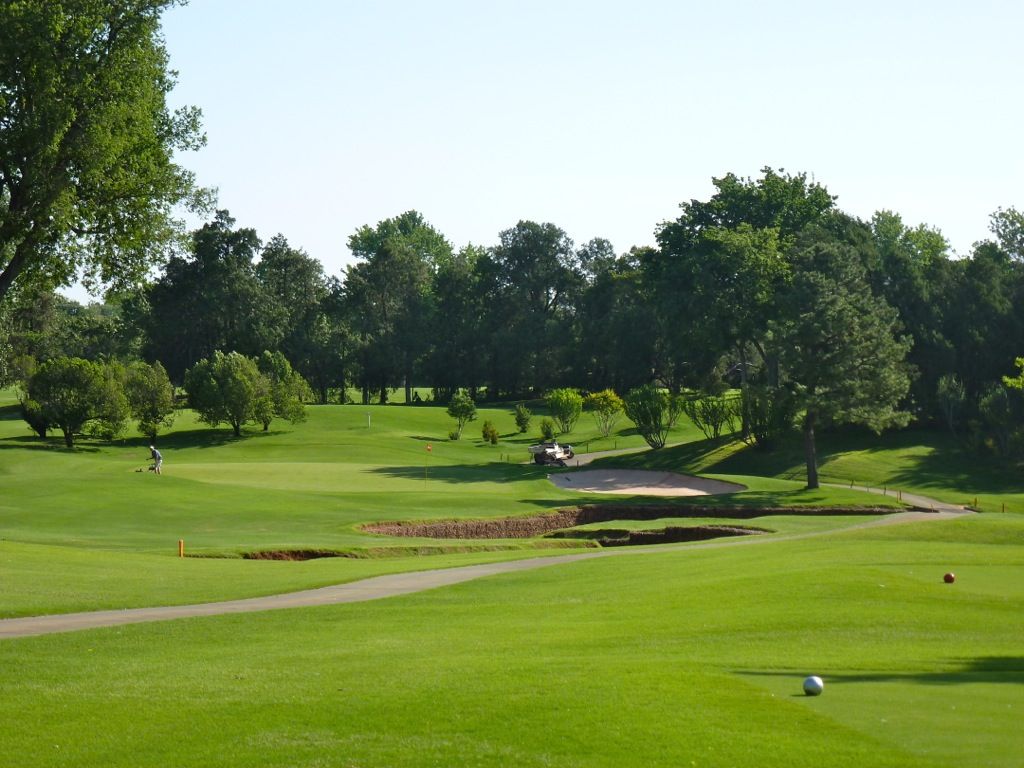
It must be crossed twice at the 12th, and it protects the left side of the green...
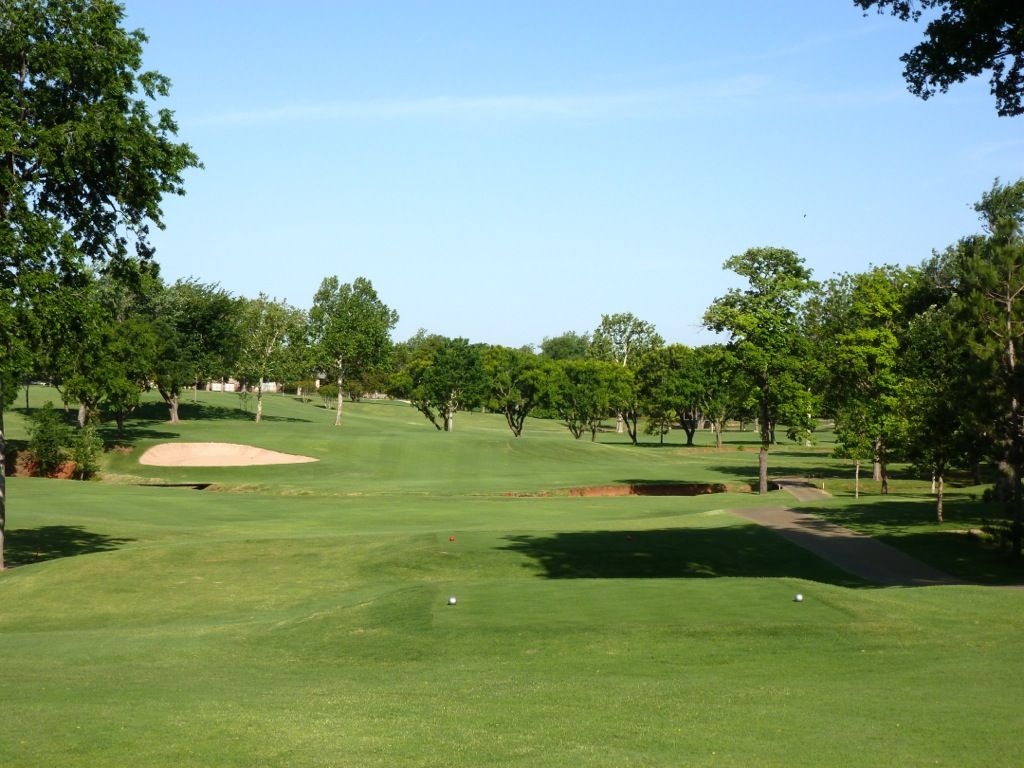
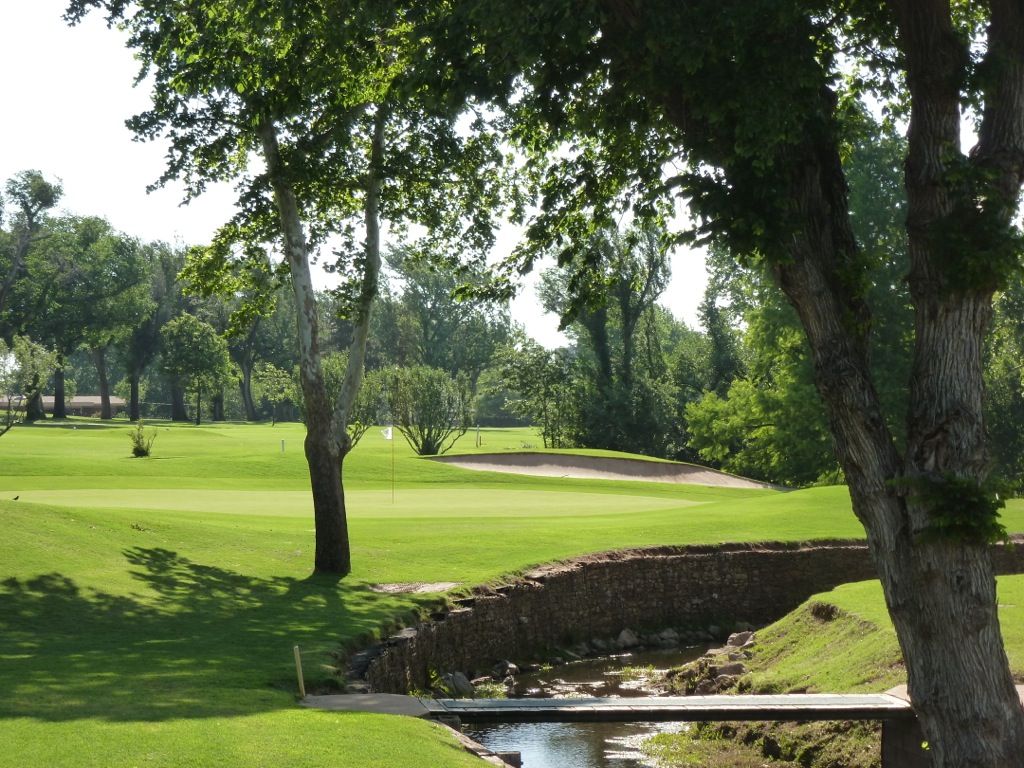
It runs right of and beyond the 13th green...
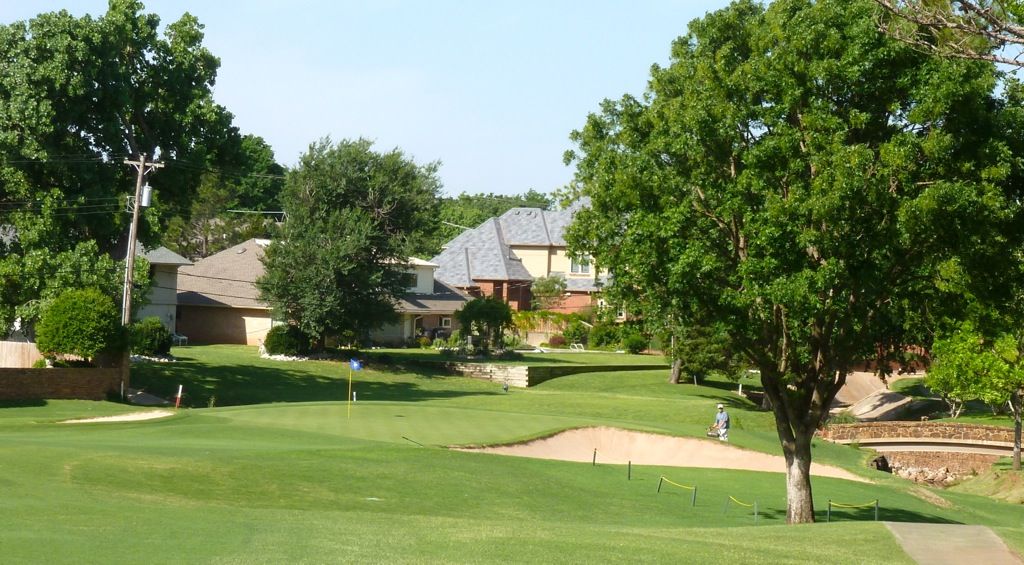
And must be carried yet again on the approach to the 14th...
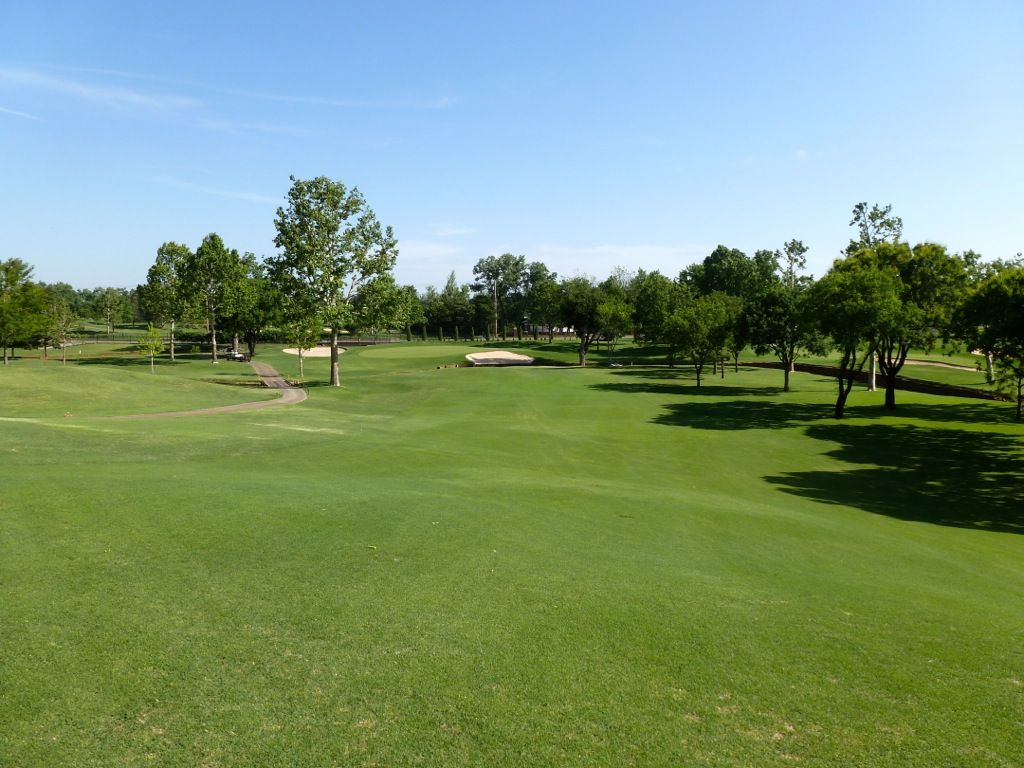
To steal a line from Ed Oden, Maxwell found a feature he liked and figuratively bashes you over the head with it.
The 14th is a strong, short par-3 with the most heavily bunkered green on the golf course. I don't know that I would call this par-3 a Maxwell template, but I did see a very similar looking hole at Southern Hills and I believe there is one at Prairie Dunes...
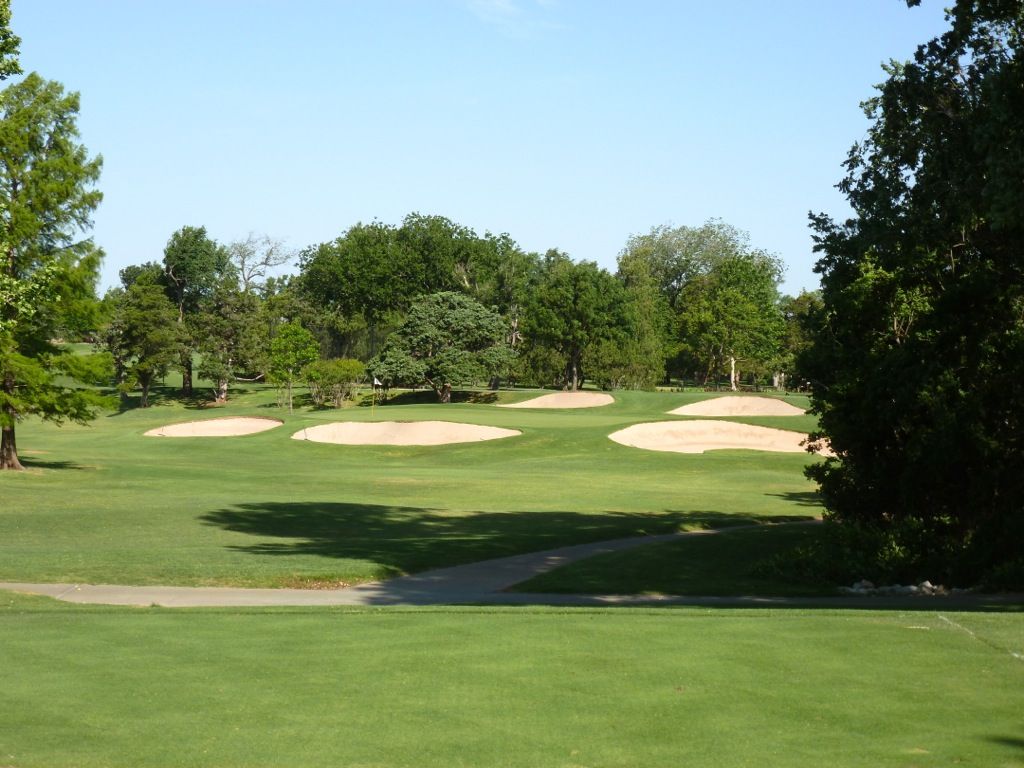
I am on record as not being a big fan of the bunker work at OCGCC... but, I have been somewhat put in my place as I recently saw historic photos of the golf course. There is no doubt there is a Dr. Mack influence in the original bunker shaping (he is credited as co-designer), though they were (of course) more ruggedly shaped than what is being put in.
From what I've read, Maxwell was very much into his golf course flowing naturally from the land. Anything man-made, and that would include bunkers, detract from the appearance of the golf course.
With that in mind, I present...
The approach to the third at Dornick Hills: From the fairway, the green looks inviting, laying at-grade and syncing well with the tilt of the land from the right. I can only imagine how much better it looked when there were no trees left or long.
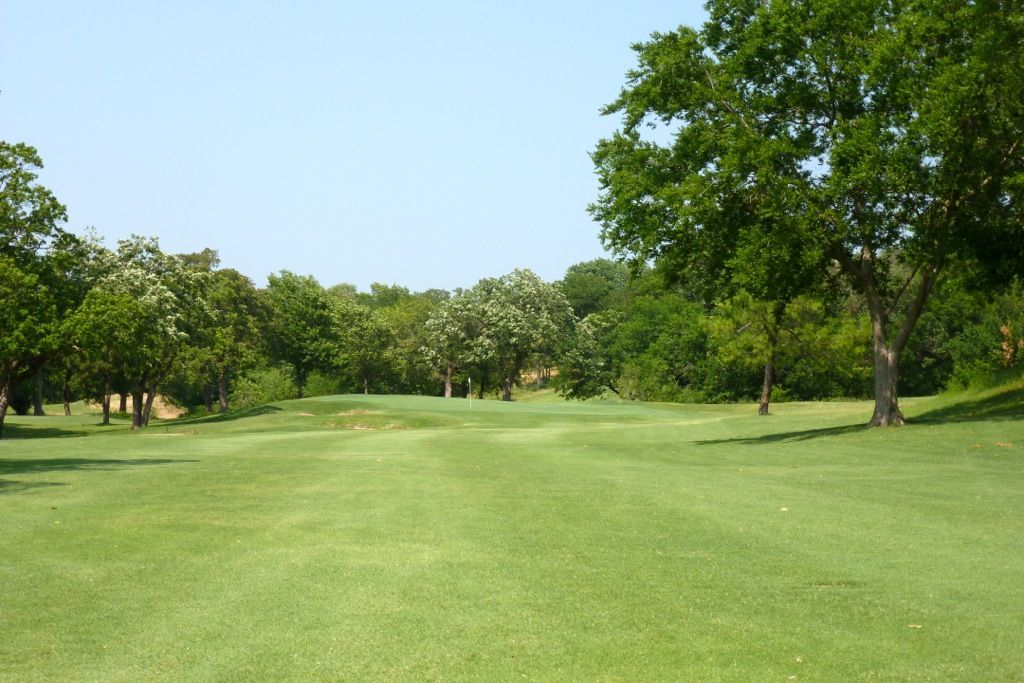
The bunkers flow flawlessly with the land. Dark in colour and simple in shape, there are not noticeable from the fairway.
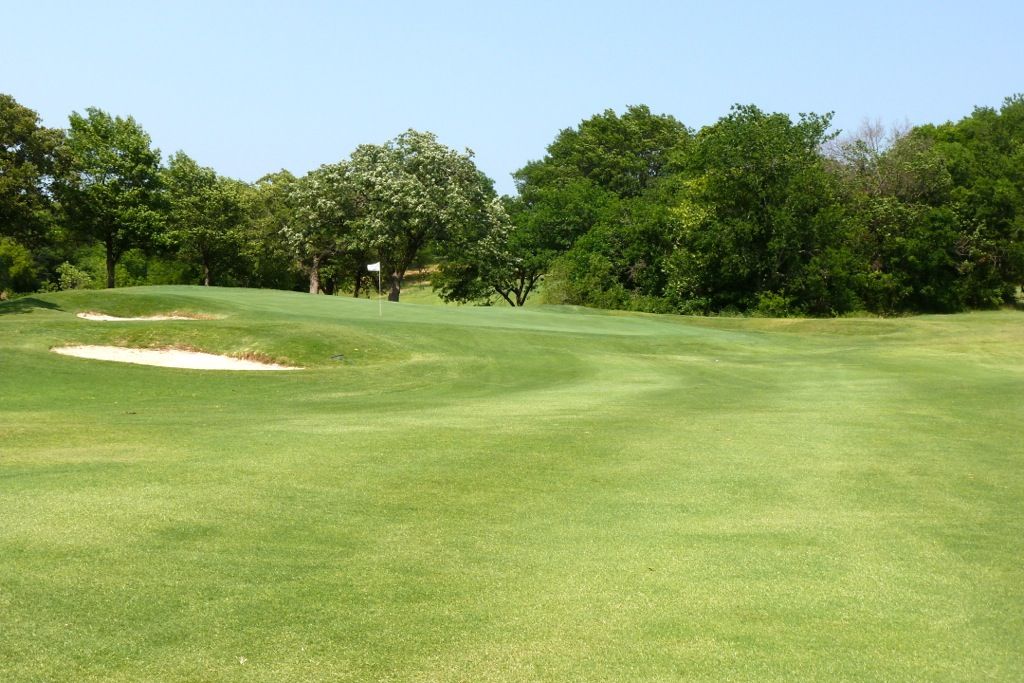
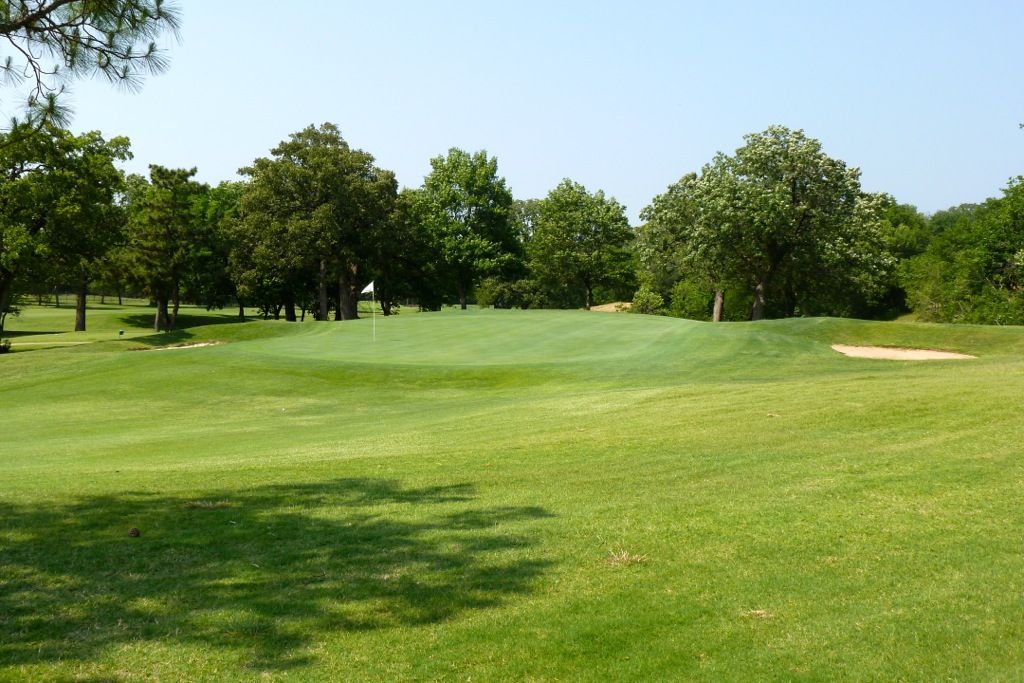
Similarly, the approach to the 9th at Dornick Hills: Not entirely unlike the 3rd at Crystal Downs, here the bunkers are cut out from a hill-side. From the fairway, one can see nothing but a green that lay at the bottom of a natural amphitheatre.
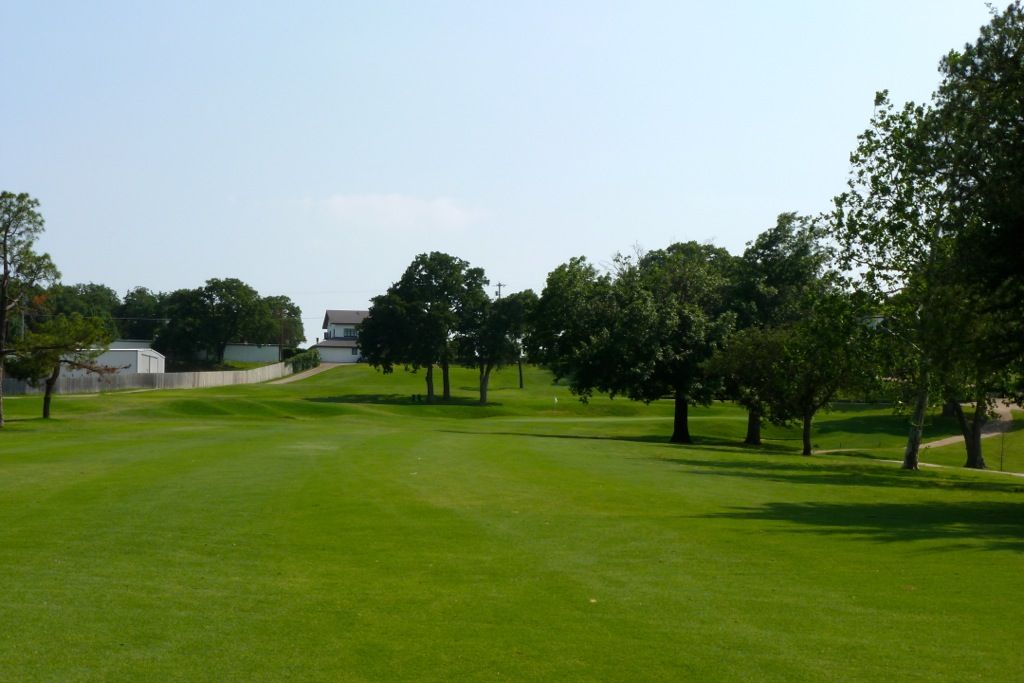
But, as seen from behind, the green is literally surrounded by bunkers; short-left, left, long-left, long and short-right, yet they could not be seen from the fairway.
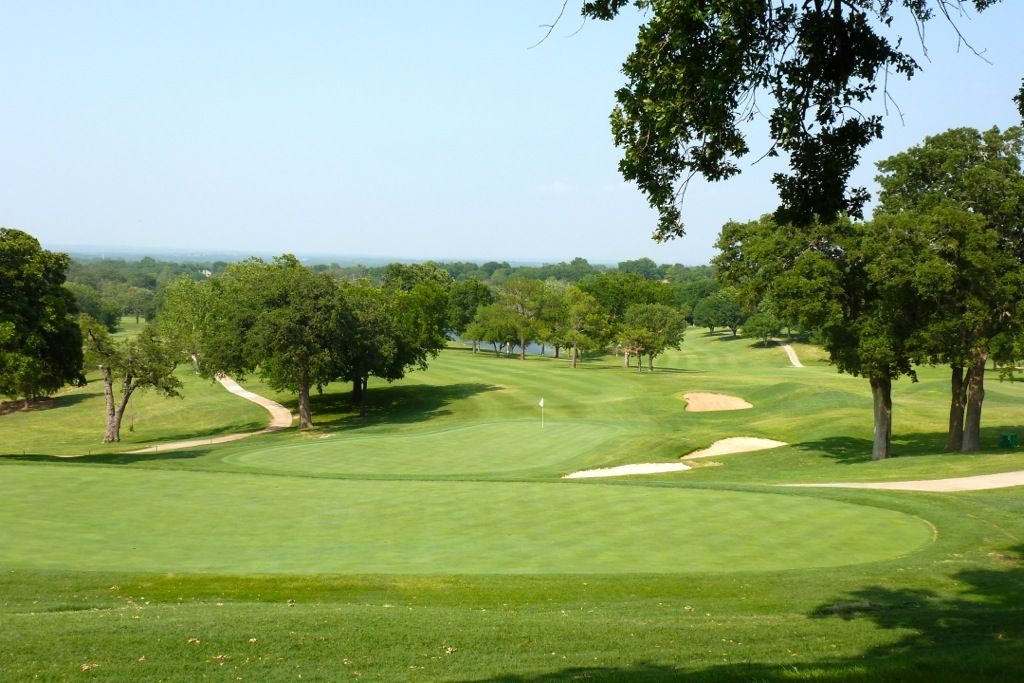
Now, we move on to the work at Oklahoma City G&CC.
First, the approach the the 17th:
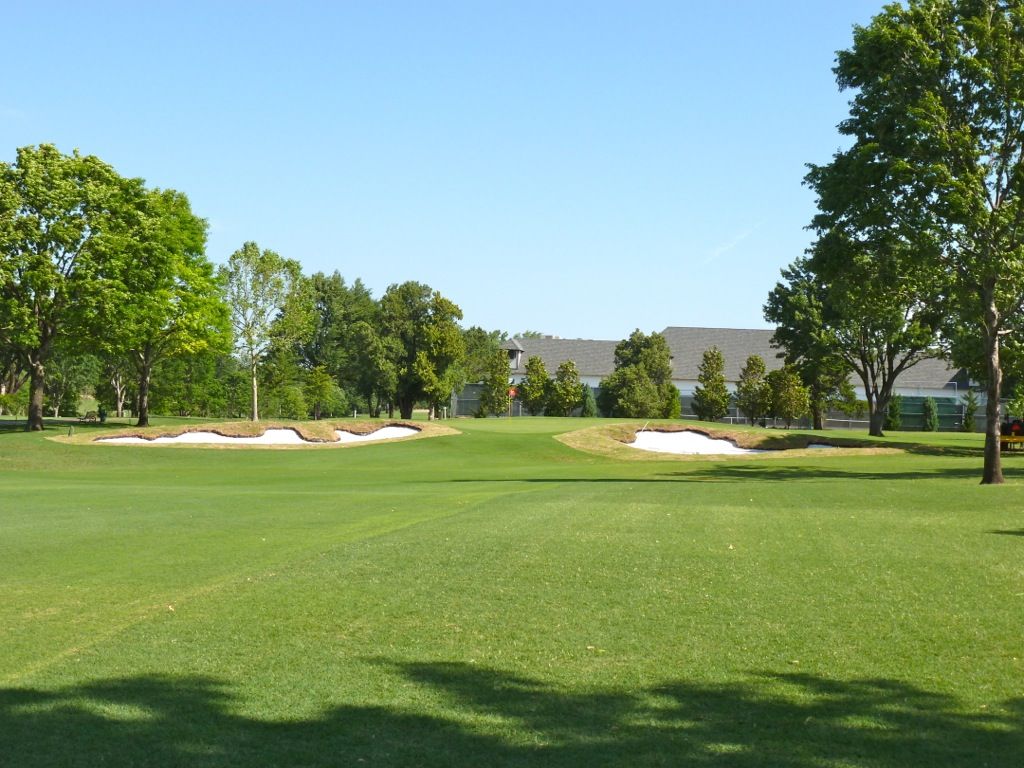
And the 18th as seen from the tee:
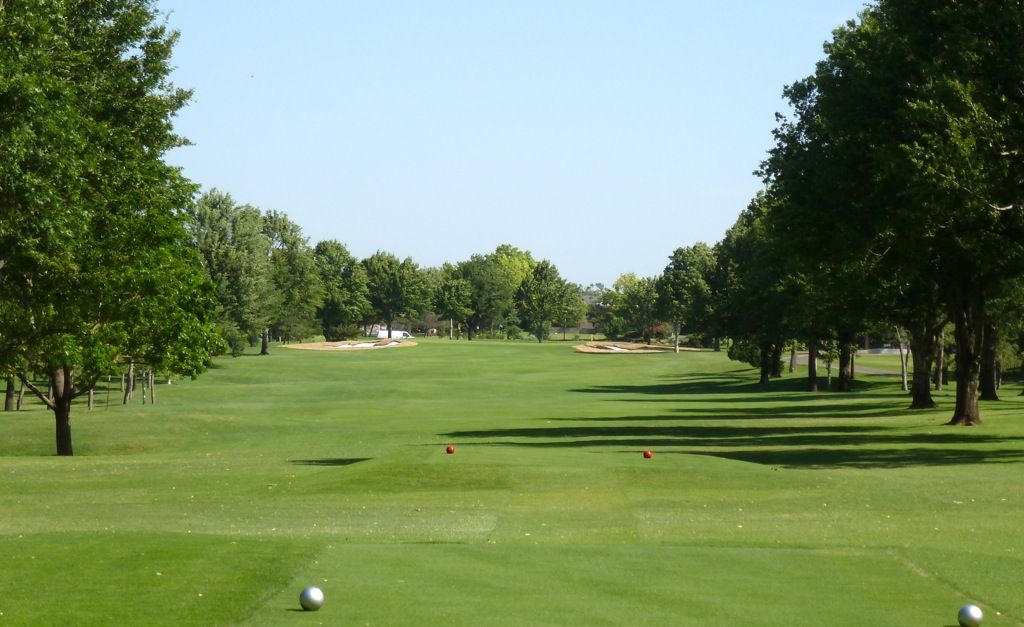
In both cases at OCGCC the bunkers are now the focal point of the hole. Whereas Maxwell liked to keep his bunkers subtle and natural, they are now raised, white and out-of-character with the rest of the golf course.